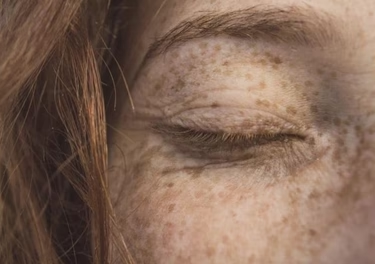Different Types of Scarring & How To Treat Them

Probably one of the most difficult issues I deal with in clinic is scarring. Scars occur on the skin as a result of trauma, injury and may also be from chronic skin conditions such as acne.
A scar represents skin's final healing and recovery phase and is still a misunderstood concept amongst patients. It is often thought that a scar is a result of a badly performed procedure and that they can be avoided. However, a scar can even occur from procedure as simple as an ear piercing.The first stage of skin healing is the clotting of the blood tissues to help prevent severe bleeding. Collagen, a naturally occurring protein, then forms a 'cement'-like action to repair and close the wound. In some cases wounds that are stitched or closed may heal better than those that are left to heal naturally. It is possible to treat scarring and reduce the severity of old scars. However, there are many different types of scarring and the treatment for each varies.Post-Inflammatory Hyperpigmentation
Post-Inflammatory Hyperpigmentation or P.I.H is possibly the most common type of scarring I see day to day. It appears as purple, red or brown marks on the skin and is a result of trauma. It's particularly common in acne prone skins and is commonly left over as a result of a blemish. This type of scarring generally contains inflammation, once the inflammation has calmed down, the scars should lighten over time with no intervention. However in some cases they may remain as a permanent fixture on the skin. Aesthetic treatments and skin strengthening products will not only help to prevent P.I.H but also fade current marks on the skin.Atrophic
Often referred to as 'ice pick' or 'box' scarring. Atrophic is often one of the most aesthetically challenging. It presents as an indentation in the skin leaving a pitted and poor textured surface. The most common causes of atrophic scarring are chicken pox and cystic acne. Treatment for atrophic scarring involves collagen stimulation therapy such as lasers and microneedling. It's important to note in this type of scarring, the aim is to improve and visibly reduce the severity rather than to completely fix the skin.Hypertrophic
Hypertrophic scarring is when the skin over-heals itself and creates a raised, waxy texture. This often occurs when the skin has been cut through injury or surgery. Some people are more prone to hypertrophic scarring than others. This can be due to medication, medical conditions or genetics. Treatment is possible to reduce the height of these scars and prevention through the use of products can also be successful.Keloid
Keloid scarring is the most difficult type of scarring for the patient and practitioner. It occurs as a result of over healing in the collagen phase of scar revision. The skin produces too much collagen, too quickly. A keloid can be identified by the size of the scar formed. It is different to that of a Hypertrophic scar, because the wound may have been small but the scar will be large in size and often develops sometime after the trauma was made.Due to the over production of scar tissue, this makes treatment for keloid scarring risky and unpredictable. If a patient has previously experienced keloid scarring the reoccurrence rate is high.Here at Face the Future we offer several different treatments for scar revision. Consultations are free of charge, enabling correct diagnosis and allowing our practitioners to identify possible treatment options. For at-home treatment of scars, Nourisil MD Silicone Scar Gel is a transparent, ultra-light and self-drying silicone gel to treat scars, wounds, traumas and burns. Nourisil MD Silicone Scar Gel helps to prevent and treat new and existing keloids and hypertrophic scars by creating a silicone barrier, helping skin to release moisture at normal levels in the scar area. The gel can be used to treat scars that result from medical and cosmetic surgery, wounds, trauma or burns.
For at-home treatment of scars, Nourisil MD Silicone Scar Gel is a transparent, ultra-light and self-drying silicone gel to treat scars, wounds, traumas and burns. Nourisil MD Silicone Scar Gel helps to prevent and treat new and existing keloids and hypertrophic scars by creating a silicone barrier, helping skin to release moisture at normal levels in the scar area. The gel can be used to treat scars that result from medical and cosmetic surgery, wounds, trauma or burns.
To book your appointment today, call 0113 282 3300 or book online: https://www.facethefutureclinic.co.uk/contact-us/
Written for you by: Emily, Face the Future
Image source: freepik.com





















![Freebie: [coat]s Tote Bag](https://cdn.shopify.com/s/files/1/0419/5447/6194/files/Coats-totebag-gwp.jpg?v=1718005595)



































